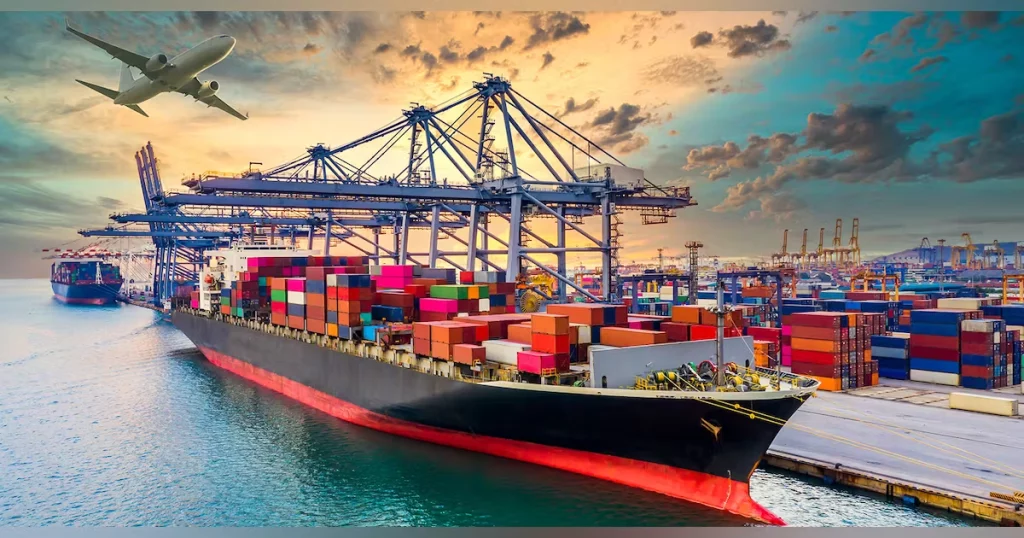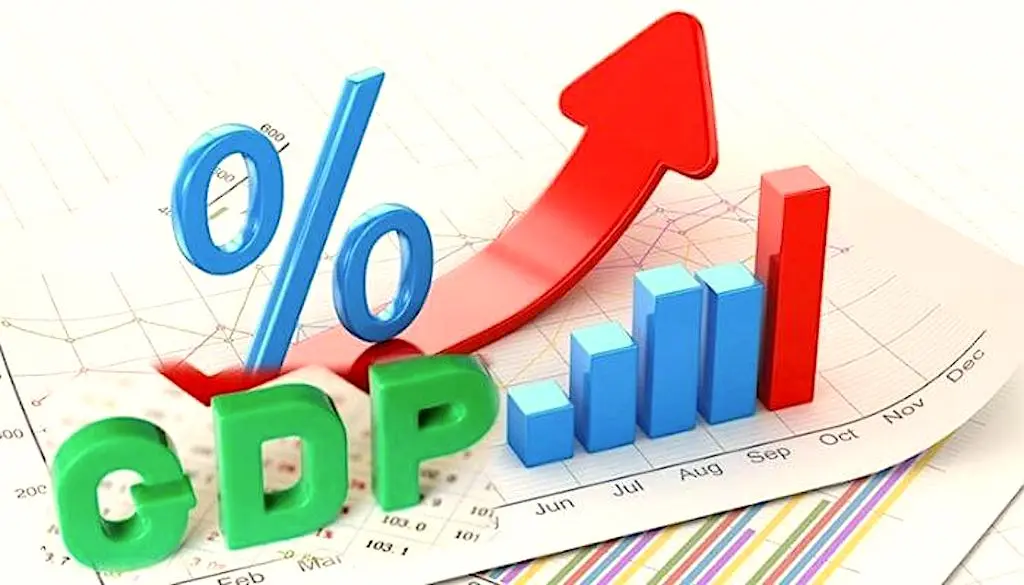In the world of international trade, the term “trade surplus” is often a sign of economic prosperity.
But what is a trade surplus, and why does it matter? Simply put, a trade surplus is when a country exports more goods and services than it imports.
This phenomenon reflects a positive balance of trade, which indicates a country’s competitiveness in the global market. Check out the following explanation below!
What is Trade Surplus?

Source: IndustryWeek
According to Investopedia, the definition of what is trade surplus means a country sells more than it buys from other countries. It’s the opposite of buying more than selling, which is a trade deficit.
Having a trade surplus can lead to more jobs and growth in a country, but it might also make things more expensive and the country’s money worth more.
Read more: Understanding the Definition of Trade in Economics: A Comprehensive Guide
Causes of Trade Surplus
Here are some of the causes of trade surplus:
1. Economic Growth
During times of economic expansion, countries have increased demand for goods and services. This demand increases production and employment, potentially resulting in a trade surplus, especially if trading partners are also experiencing growth.
2. Exchange Rate Effect
When the value of a country’s currency falls, its exports become cheaper and more attractive to foreign buyers, leading to an increase in exports. Instead, a stronger currency can make exports more expensive and imports cheaper, potentially leading to a trade deficit.
3. Product Competitiveness
The quality and price of a product affect its competitiveness in the international market. High-quality or cost-effective products tend to be more desirable, thus contributing to a trade surplus.
Effects of Trade Surplus
When a country experiences a trade surplus, it has several notable effects on its economy and international standing. Here are several key points summarizing these effects:
1. Strengthened Currency Value
A trade surplus often leads to an appreciation of the country’s currency. This is because foreign buyers need to purchase the country’s currency to pay for the exports, increasing demand for the currency on the global market.
2. Economic Growth
An increase in exports relative to imports can contribute to a country’s GDP growth. This is because exports add to the total output and economic activity within a country.
3. Improved Employment Rates
Trade surpluses can lead to job creation, especially in sectors focused on manufacturing and exporting goods. This is due to increased production to meet foreign demand.
4. Increased Foreign Reserves
A surplus in trade often results in an accumulation of foreign currency reserves, which can be used by a country’s central bank to manage the national currency’s value.
5. Inflationary Pressures
While not always the case, a trade surplus can lead to inflationary pressures. As the demand for the country’s currency increases, it can lead to higher prices for goods and services domestically.
6. Trade Relations and Tensions
Persistent trade surpluses can lead to trade tensions with other countries, especially those experiencing significant trade deficits with the surplus country. This can result in the imposition of tariffs or trade barriers.
7. Dependency on External Markets
Relying heavily on exports can make a country vulnerable to economic conditions in its trading partners’ countries. If there’s a downturn in those economies, demand for exports could decrease, affecting the surplus country’s economy.
8. Shifts in Production and Industries
Over time, a trade surplus can lead to shifts within a country’s economy, focusing more on export-oriented industries and potentially neglecting domestic-oriented sectors.
Each of these effects has complex implications for a country’s economic policy, international relations, and domestic economy. A trade surplus can be a sign of economic strength, but it also requires careful management to ensure sustainable growth and stability.
Read more: What is Global Trade Management? Understanding GTM’s Components and Challenges
Economic Impact of Trade Surplus

Source: Current Affairs
1. Strengthening of the National Currency
A trade surplus increases the demand for a country’s currency in the international market as foreign buyers need to exchange their currency to purchase the surplus country’s exports.
This demand can strengthen the national currency, affecting international trade and economic relations.
2. Increase Gross Domestic Product (GDP)
When asking “what is trade surplus,” it’s important to note its positive correlation with GDP growth. A trade surplus means that a country exports more than it imports, contributing positively to its GDP.
The surplus indicates an efficient economy that produces goods and services at a volume and price attractive to international markets.
Read more: GDP per Capita in China: Growth, Factors, and Impact
3. Impact on Domestic Industries and Employment
A significant economic impact of a trade surplus is on domestic industries and employment. Industries that export goods and services are likely to see growth and may increase hiring to meet international demand.
Also, this impact can lead to lower unemployment rates and potentially higher wages in those industries.
4. Inflationary Pressures
While a trade surplus can indicate economic health, it can also lead to inflationary pressures. As the national currency strengthens, it can make imports cheaper, potentially leading to an increase in consumer prices and affecting the purchasing power domestically.
5. International Relations and Trade Policies
In economic terms, a trade surplus can affect a country’s international relations and trade policies.
Countries with persistent trade surpluses may face pressure from trading partners to adjust their economic policies or face tariffs and trade barriers, as these surpluses can create imbalances in global trade.
6. Sustainability and Economic Diversification
Another critical aspect when discussing “what is trade surplus” is its sustainability and the need for economic diversification.
Relying too heavily on certain sectors for exports can expose an economy to global market fluctuations. Diversifying the economy can help mitigate these risks and ensure long-term stability.
7. Investment in Infrastructure and Social Services
Countries with trade surpluses may have more financial resources to invest in infrastructure and social services.
This can lead to improved living standards and economic development, enhancing the quality of life for citizens.
In summary, understanding “what is trade surplus” involves recognizing its multifaceted impacts on an economy.
Implications for Domestic Economy
The implications of a trade surplus for the domestic economy can be summarized into three main points, which are the following:
1. Increased Economic Growth
A trade surplus usually signals a strong export sector, which can be a significant driver of economic growth. By selling more goods and services to the rest of the world than it buys, a country can see an inflow of foreign currency, thereby increasing the overall growth rate of the domestic economy.
2. Changes in Currency Values
Increased demand for a country’s exports often leads to a rise in the value of its currency. While this can make imports cheaper and reduce inflationary pressures in the short term, it can also make exports less competitive over time, potentially narrowing the trade surplus if not managed carefully.
3. Sectoral Shifts and Employment Patterns
Export-led growth can result in shifts in the domestic economy, which support export-oriented industries. This shift can create employment opportunities in these sectors, although it can also lead to a decrease in employment in industries that are not internationally competitive.
What is Trade Surplus vs. Trade Deficit

Source: Tiger Brokers
The main difference between a trade surplus and a trade deficit lies in the balance of trade, which measures the value of a country’s exports against its imports.
What is Trade Surplus
According to WallStreetPrep, the definition of what is trade surplus happens when a country exports more than it imports, resulting in a positive balance of trade. This signifies that a country is selling more to other countries than it is buying from them.
A trade surplus is often seen as a sign of economic strength as it indicates high demand for a country’s products in the international market.
What is Trade Deficit
In the other way, a trade deficit occurs when a country imports more goods and services than it exports, leading to a negative trade balance.
This situation indicates that a country is buying more from other countries than it is selling. In the long run, trade deficits can lead to currency devaluation due to reduced demand for the country’s currency.
This devaluation occurs because there is a greater need to exchange the country’s currency for foreign currency to pay for imports, which increases the supply of the domestic currency and reduces its value.
These are the definitions of what is trade surplus and other information that is important to know. A trade surplus can be a sign of economic strength and competitive advantage in the global market.
However, it is important for countries to strive for a balanced trade scenario where both exports and imports contribute to a healthy and dynamic economy.






